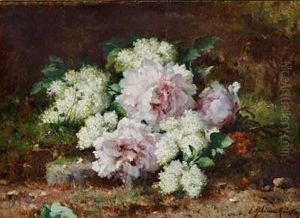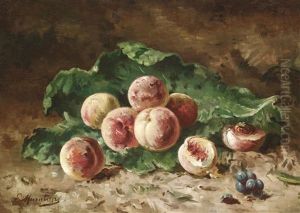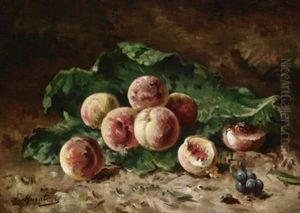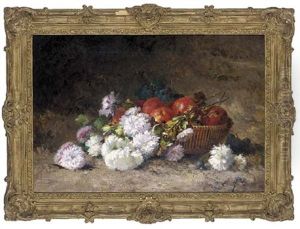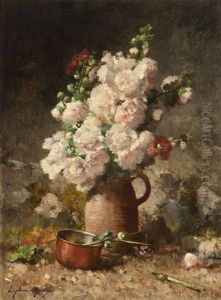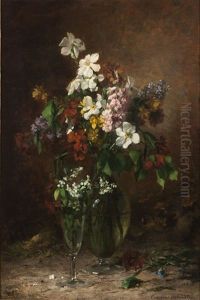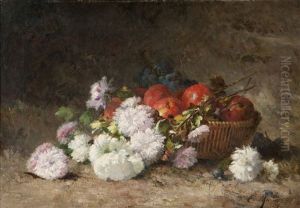Euphemie Muraton Paintings
Euphémie Muraton was a French painter born in 1840 in France, whose artistic journey reflects the vibrant tapestry of 19th-century European art. She was known for her delicate touch and the ability to capture the emotional depth and atmospheric nuances in her works, spanning genres from landscapes to portraits, and still lifes. Muraton's artistry was nurtured in an era when the art world was predominantly male-dominated, making her accomplishments and recognition noteworthy.
Educated in the traditions of the French academic system, Muraton developed a style that, while reflective of the prevailing norms of her time, including the influence of Romanticism and later, Impressionism, retained a distinct personal signature. Her education and early career were influenced by the teachings of notable artists of the period, which was common for artists who sought to gain formal training and recognition through the Salon, the official art exhibition of the Académie des Beaux-Arts in Paris.
Throughout her career, Euphémie Muraton exhibited her works in various prestigious venues, including the Paris Salon, where she garnered attention and acclaim. Her ability to imbue her canvases with a sense of immediacy and emotional resonance appealed to a broad audience, and she was celebrated for her nuanced approach to color and light. Muraton's landscapes and scenes of daily life are particularly lauded for their vibrant yet delicate rendering, capturing the transient beauty of moments and scenes with a poetic grace.
Despite the challenges faced by women in the arts during her lifetime, including limited access to certain artistic circles and societal expectations, Muraton carved a successful path for herself. Her work was well-received by critics and collected by art enthusiasts, contributing to the broader movement of recognizing and valuing the contributions of women to the arts.
Euphémie Muraton's legacy is that of a talented artist who navigated the complexities of the 19th-century art world with determination and grace. Her death in 1914 marked the end of a career that had spanned several decades, leaving behind a body of work that continues to be appreciated for its beauty and emotional depth. Muraton's contributions to French art are a testament to her skill and perseverance, making her a notable figure in the history of 19th-century European painting.

